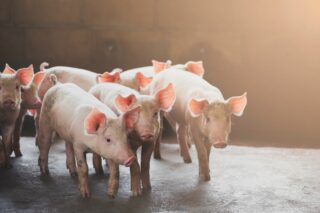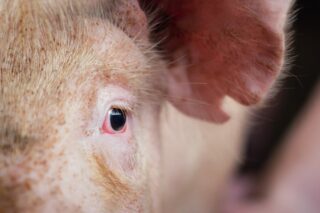Eliminating feed as a
contamination source
In the strife for a healthy, responsible, and profitable farming activity, diseases such as Foot and Mouth Disease (FMD), PRRS, PED, and the more recent African Swine Fever (ASF) are a formidable enemy. A sly one, as well, as these diseases are viral, and easily transmissible even through minimal viral particles. To ensure the health and well-being of our animals, the safety of our food, and the profitability of our farms, it’s imperative to prevent pathogens from infiltrating our vital agricultural spaces. What doesn’t enter, cannot spread.

Identifying contamination sources
Pathogens, ranging from bacteria and viruses to parasites, are microscopic invaders that compromise animal health, but also jeopardize the safety of products entering the human food chain. Contamination can occur through various vectors, including contaminated equipment, and even personnel.
This is why today’s stringent biosecurity measures often focus on prevention through restricted ingress of people, pests, materials, and even airborne contaminants into farms. Of course, certain essential interactions with the external environment cannot be avoided. Pigs need transportation to slaughterhouses, manure must be disposed of, and feed and water must be brought onto the farm. These points of contact present vulnerabilities that most farms aim to counter through managerial protocols and the use of appropriate antiseptic products.
What about feed?
Despite the good and common practices mentioned above, the role of feed mitigation is often overlooked. Nevertheless, research has shown that feed can also act as a conduit for pathogens (Niederwerder et al.). From raw ingredients to finished feed products, every stage of the feed supply chain presents contamination risks. Factors such as improper storage, transportation, and processing can introduce pathogens into the feed.

Ultimate feed safety, thanks to science
As so often, science offers a lot of answers to this problem. Just imagine being able to treat animal feed with a safe solution that eliminates viral transmission and enhances animal performance at the same time. Such an approach is possible thanks to the marvel of medium-chain fatty acids (MCFAs).
MCFAs can effectively neutralize contamination by penetrating the microbial membranes and killing the pathogens from the inside. When administered to animal feed, the MCFA’s will move around in the feed and kill the bacteria, viruses and toxins that are in there, thus effectively ‘disinfecting’ the feed. Additionally, MCFAs have a positive effect on the animals’ intestinal health and immune system.
One less thing to worry about
Based on numerous studies, corroborated by field validation trials, we can conclude that:
– MCFA-treated feed carries a minimal pathogenic load (or none at all)
– MCFA-fed animals show increased resilience against pathogens
This dual beneficial effect turns MFCAs (when streamlined into the right blends and formulations) in a feasible, affordable, and sustainable way to close the door on feed contamination. With that door tightly closed on pathogens, livestock farmers have at least one less thing to worry about.
Contact your agrimprove expert
Do you have a question or want personalized advice? Your Agrimprove expert is willing to help. Reach out directly or request to be contacted at your convenience.